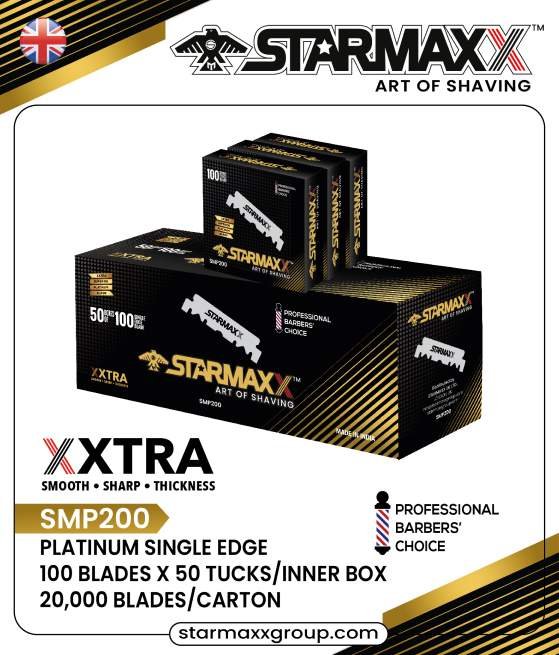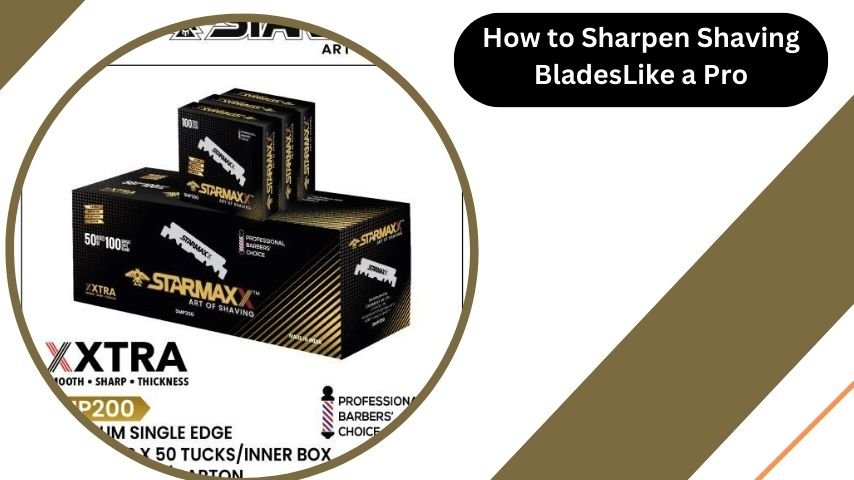A sharp shaving blade is essential for a smooth, clean shave. Over time, however, even the best blades can dull, leading to nicks, irritation, and an uneven shave. While many people simply replace their shaving blades when they lose their edge, you can extend the life of your blades by sharpening them at home. In this guide, we’ll show you how to sharpen shaving blades like a pro, using simple methods that anyone can master.
NOTE: If you’re looking for high-quality Stainless Shaving Blades or need more tips on sharpening and maintaining your shaving tools, visit our store or contact our expert team today. We offer premium stainless blades and accessories designed to give you the best shave possible. Keep your blades sharp and your shave smooth with our professional-grade products!

Understanding the Importance of Sharp Shaving Blades
Before we dive into the sharpening techniques, it’s important to understand why sharp blades are crucial for a good shave.
1. A Smoother Shave
Sharp blades glide effortlessly over your skin, cutting hair cleanly at the surface without pulling or tugging. This results in a smoother, more comfortable shave with fewer passes, reducing the risk of irritation.
2. Less Irritation
Dull blades require more pressure and multiple passes to achieve a close shave, which can irritate the skin, leading to redness, razor burn, and even ingrown hairs. Keeping your blades sharp helps prevent these issues.
3. Cost Savings
High-quality shaving blades can be expensive, especially if you replace them frequently. By learning how to sharpen your blades, you can extend their life and reduce the number of replacements needed, saving you money in the long run.
Tools You’ll Need to Sharpen Shaving Blades
Sharpening shaving blades requires a few basic tools, most of which you may already have at home. Here’s what you’ll need:
1. Leather Strop or Denim Fabric
A leather strop is a traditional tool used to sharpen straight razors. If you don’t have a strop, a piece of denim fabric can also work well for sharpening disposable or safety razor blades.
2. Razor Strop Paste or Lubricant
Razor strop paste is used to condition the leather strop and improve its effectiveness. If you’re using denim, you can substitute with a bit of shaving cream or olive oil.
3. Glass or Ceramic Surface
A smooth glass or ceramic surface, such as the bottom of a coffee mug or a glass bottle, can be used to realign the blade’s edge. This technique is especially useful for disposable or cartridge razor blades.
4. Stropping Cloth or Microfiber Cloth
A stropping cloth or microfiber cloth can be used to clean and polish the blade after sharpening, removing any residue and enhancing its sharpness.
Step-by-Step Guide to Sharpening Shaving Blades
Now that you have your tools ready, let’s go through the steps to sharpen your shaving blades effectively.
1. Sharpening Straight Razors
If you use a straight razor, a leather strop is the best tool for sharpening the blade.
Step 1: Prepare the Strop
- Apply a small amount of razor strop paste to the leather strop. This helps condition the leather and improves the sharpening process.
- Hold the razor by the handle and lay the blade flat against the strop with the cutting edge facing away from you.
Draw the blade across the strop with gentle pressure, moving from the base of the blade to the tip. Make sure to keep the blade flat against the strop to maintain the correct angle.
- Flip the razor over and repeat the process on the other side. Aim for 15-20 strokes per side to achieve a sharp edge.
- After sharpening, wipe the blade with a stropping cloth or microfiber cloth to remove any residue.
2. Sharpening Safety Razor Blades
Safety razor blades are typically double-edged, making them a bit different to sharpen than straight razors.
- Lay a piece of denim fabric flat on a stable surface. Apply a small amount of shaving cream or olive oil to the fabric to act as a lubricant.
- Hold the safety razor at a slight angle and press the blade against the denim. Draw the blade across the fabric in the opposite direction of shaving, applying light pressure.
- Repeat the process for about 10-15 strokes on each side of the blade. This will help realign and sharpen the edge.
- After sharpening, reassemble the razor and test the blade on a small area of your arm or face to check its sharpness. If necessary, repeat the process for a sharper edge.
3. Sharpening Disposable or Cartridge Razor Blades
While disposable and cartridge razor blades are designed to be replaced, you can still extend their life by sharpening them.
- Find a smooth glass or ceramic surface, such as the bottom of a coffee mug or a glass bottle. Ensure the surface is clean and dry.
- Hold the razor and press the blades against the glass or ceramic surface. Move the razor in the opposite direction of shaving, with the blades trailing behind.
- Repeat this process for 10-15 strokes, then test the blade’s sharpness. You can do this by gently running the blade over a piece of paper or trying a small section of your shave.
- After sharpening, rinse the blades under warm water and dry them thoroughly to prevent rust. Use a stropping cloth or microfiber cloth to polish the blades.
Tips for Maintaining Sharp Shaving Blades
Sharpening your blades is just one part of the equation. To keep your shaving blades sharp and in good condition, follow these maintenance tips:
1. Rinse and Dry After Each Use
After every shave, rinse the blades thoroughly under warm water to remove any shaving cream, hair, and debris. Shake off excess water and gently pat the blades dry with a towel. Storing the blades dry helps prevent rust and corrosion.
2. Store Blades Properly
Always store your razor in a dry place, away from moisture. Avoid leaving it in the shower or on a wet countertop, as exposure to moisture can dull the blades over time. Use a razor stand or case to keep the blades protected when not in use.
3. Avoid Excessive Pressure
When shaving, use light pressure to let the blade do the work. Pressing too hard can cause the blade to dull more quickly and increase the risk of nicks and cuts.
4. Regularly Replace Blades
Even with proper sharpening and maintenance, all blades will eventually need to be replaced. Pay attention to signs that your blades are dull, such as increased resistance or discomfort during shaving. Regularly replacing your blades ensures a smooth, irritation-free shave.
Conclusion:
Sharpening your shaving blades like a pro is a simple and effective way to extend the life of your blades, save money, and enjoy a smoother, more comfortable shave. Whether you use a straight razor, safety razor, or disposable blades, these techniques will help you maintain a sharp edge and achieve professional-level results at home.
For more insightful articles related to this topic, feel free to visit cleverblogger.




